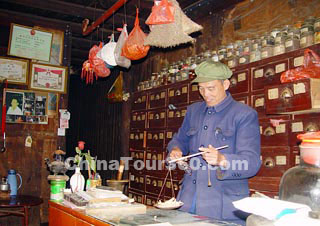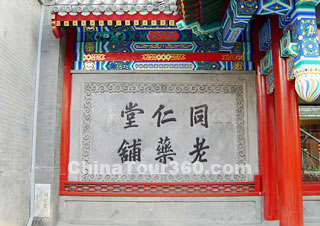Traditional Chinese Medicine is an indispensable part of the glorious culture of the Chinese nation.
Totally different from the principles of western medicine, theories of traditional Chinese medicine emphasize the balance of the whole body. In the treatment process, the diagnostic procedure involves four steps: observing, listening and smelling, inquiring, and palpating. Observing refers to observe the color of face and tongue as well as the patient's moves. The second step, listening and smelling, is to listen the patient's voice and smell the odour of the patient. Inquiring is asking the patients' feelings to their bodies, such as whether they are cold or hot, whether they feel dizzy or not, or whether they sweat of not. Among them, palpating is the most important, which is touching the patient's body and coming to the diagnostic results. Other methods of treatment include acupuncture and moxibustion, cupping therapy, breathing therapy (Qigong), diet therapy and medical massage. The enormous size of a Chinese pharmacy is overwhelming, and the selection of its remedies may include odd things like dried monkeys, toads, tortoises, and centipedes to mention a few.
|
|
The development of traditional Chinese medicine spans several thousands of years and is chronicled in many important books. The Yellow Emperor's Canon of Interior Medicine, Shen Nong's Canon of Herbs, and the Compendium of Materia Medica are some of the more influential medical books.
With its unique theoretical framework, diagnostic methods and abundant historical literature, it stands as an integral part of the medical sciences of the world. Nowadays, traditional Chinese medicine is regaining its importance. Both western medical care and traditional Chinese medicinal practice exist in China, although the Western medical system seems to be dominant. Large public hospitals in cities across the country offer both traditional Chinese and Western approaches to medical treatment. Those whose problems are not too serious or urgent, are more likely to see a traditional doctor, who can better restore harmony to their body.
Great importance has been attached to traditional Chinese medicine since the founding of the People's Republic of China. The Party and the People's government have formulated a series of guiding principles and policies to support and promote development of Traditional Chinese Medicine.
The ongoing effort to promote and further develop Traditional Chinese Medicine will surely continue to make remarkable contributions to the common wealth of the nation as well as the whole of mankind.
Besides the traditional Chinese Medicine, many minority groups in China also have their medicine methods, such as the Tibetan medicine, Mongolian medicine and Miao medicine.









